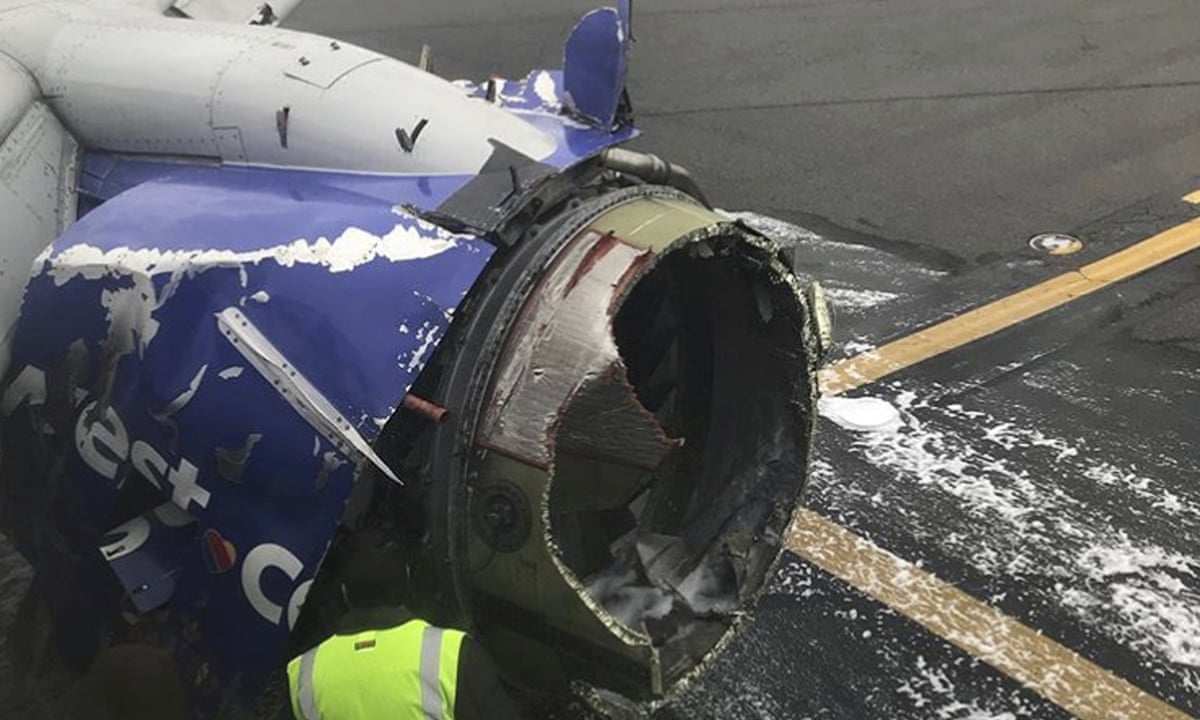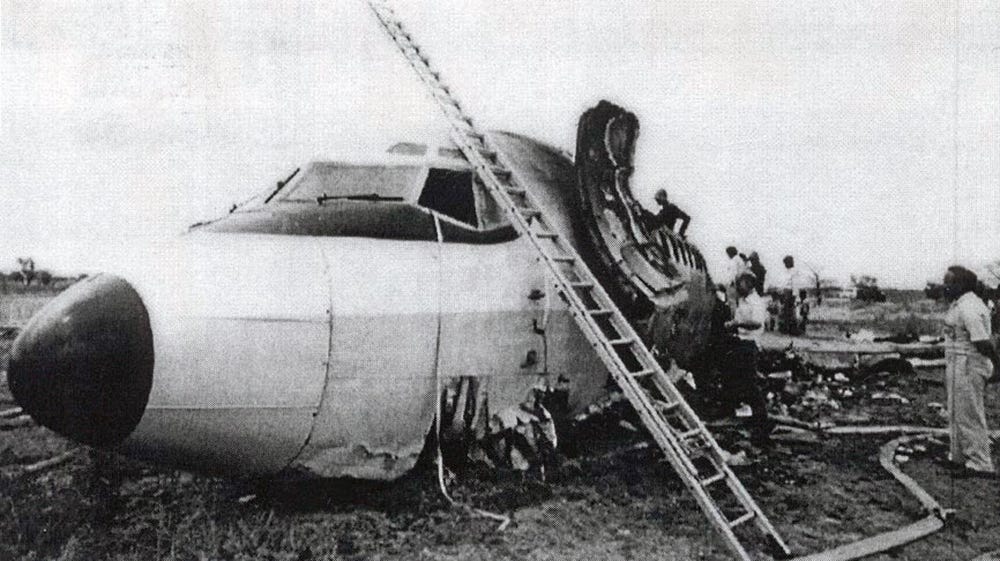
On January 17, 2008, British Airways Flight 38 was nearing the final moments of a long-haul journey from Beijing to London. The Boeing 777, one of the most reliable and technologically advanced aircraft of its time, was descending gracefully toward Heathrow Airport under clear skies.
Onboard were 136 passengers and 16 crew members, most of them weary from the nearly ten-hour flight, some already peering out the windows in anticipation of landing. But in the final two minutes of the flight—just moments before touching down—the impossible happened.
Without warning, both of the plane’s Rolls-Royce Trent 895 engines lost thrust. Not partial thrust, not a temporary hiccup, but a near-complete power loss. The pilots had no time to diagnose the failure.
They were 720 feet above ground and descending rapidly. The autopilot was disengaged as Captain Peter Burkill and First Officer John Coward took manual control, but with no engine response, they had mere seconds to react. The aircraft was too low and too slow, and the runway was still out of reach.
The plane was falling from the sky.
Yet in one of the most astonishing feats of modern airmanship, the crew managed to keep the aircraft stable, align it with the runway, and guide it just over a series of houses, roads, fences, and radio towers.
Then, in a desperate attempt to keep the plane airborne a little longer, the captain raised the flaps to reduce drag. It was a dangerous gamble. The flaps help keep the aircraft aloft at slow speeds, but they also create additional drag.
Retracting them gave the plane a final boost, just enough to clear obstacles. But it wasn’t enough to make the runway.

Seconds later, the plane slammed into the grass less than 1,000 feet short of Runway 27L. The impact was brutal. The landing gear collapsed instantly. The engines tore off from the wings and scattered debris across the ground.
The fuselage skidded violently across the turf, tilting to one side and coming to a halt in a twisted, broken heap. Inside the cabin, seats shook violently, overhead bins burst open, and screaming passengers braced for death. But when the dust settled, something incredible became clear.
Everyone had survived.
Miraculously, not a single passenger or crew member was killed. There were 47 injuries, some serious, but none fatal. The aircraft was destroyed, but the people onboard walked away.
And in the days that followed, the world would come to marvel not only at the survival, but also at the mystery. What could have caused both engines of a state-of-the-art aircraft to fail at the same time, during the most critical moment of flight?
The Air Accidents Investigation Branch (AAIB) launched a full-scale inquiry. Black boxes were retrieved quickly. The cockpit voice recorder and flight data recorder painted a picture of a crew that remained composed, professional, and clear-headed under unimaginable pressure.
Nothing in the flight's earlier data indicated any system malfunction. There was no bird strike. No weather anomaly. No pilot error.
What investigators did notice was that the engines began to respond sluggishly during final approach—thrust levels dropped far below what was needed to maintain the glide path.

The throttles were at full power, but the engines weren’t responding. The aircraft had flown the perfect approach until the last two minutes, and then suddenly, the thrust vanished.
Attention turned to the fuel system. Tests revealed that the aircraft had more than enough fuel onboard, and fuel quality was verified. But then came the breakthrough.
Investigators discovered that wax-like ice crystals had formed in the fuel while the plane cruised over Siberia at extremely cold temperatures. These crystals had accumulated in the fuel-oil heat exchangers inside the engines.
As the aircraft began its descent and fuel demand increased, the warmer fuel flow began to dislodge the ice. But rather than melting, the ice crystals shifted en masse and clogged the exchangers. This choked the fuel supply and starved both engines of power.
It was a phenomenon never before seen in a Boeing 777.
The report confirmed that the crew had no way of predicting or preventing the blockage. Their response in the cockpit, however, was textbook perfect. First Officer Coward, who was at the controls during the descent, was later praised for maintaining the glide slope without engine power and landing the plane with extraordinary precision under such chaotic circumstances.
Captain Burkill coordinated the emergency response, preparing the crew and passengers for what they thought would be a crash landing with potentially fatal consequences.
The flight attendants executed evacuation procedures flawlessly, helping injured passengers and getting everyone off the plane within minutes. The survival of all onboard wasn’t just a miracle. It was the result of training, teamwork, and calm leadership in the face of imminent disaster.

But the event also sent shockwaves through the aviation industry. Boeing, Rolls-Royce, and regulatory bodies around the world launched immediate investigations and redesign efforts.
Fuel-oil heat exchangers on Trent 800 series engines were modified to prevent future ice blockages. Airlines were instructed to follow new operational guidelines when flying through extremely cold conditions for extended periods.
Passengers onboard Flight 38 described the landing as both terrifying and surreal. Many thought the jolt was a normal hard landing until they looked out the window and saw torn-up grass, scattered engine parts, and emergency vehicles racing toward the aircraft.
One survivor later said, “It felt like we were landing in slow motion. You could hear metal tearing, but it didn’t register until we stopped and people started screaming.” Another recalled the eerie silence in the seconds before impact: “You could hear a pin drop. Then everything exploded into chaos.”
In press conferences afterward, Captain Burkill acknowledged that it was “the most difficult situation” he had ever faced. First Officer Coward downplayed his own heroics, simply saying, “I was just doing my job.”
The aviation community, however, disagreed. Their split-second decisions and flawless execution under pressure were celebrated across the industry. Both men received awards and global recognition.
Even as the headlines faded, British Airways Flight 38 remained a defining event in modern aviation. It reminded the world that no aircraft, no matter how modern, is immune to the unpredictability of nature.
But it also showed that the human element—the instincts, discipline, and courage of a trained crew—can make the difference between life and death.

Today, the wreckage of the aircraft is long gone, and Heathrow’s grassy field has returned to routine. But pilots around the world study the event in simulation and training courses.
New engine designs now account for the ice blockage scenario. And passengers who walked away from that flight carry the memory of a day that could have ended in horror but instead became a story of survival.
The odds were against them. A plane without engines. A short runway. A near-impossible approach. And yet, because of human strength, skill, and instinct, 152 souls lived to tell the story.
In aviation history, British Airways Flight 38 will forever be remembered not for how it ended in disaster—but for how it ended in survival.

-1750068259-q80.webp)

-1749884951-q80.webp)